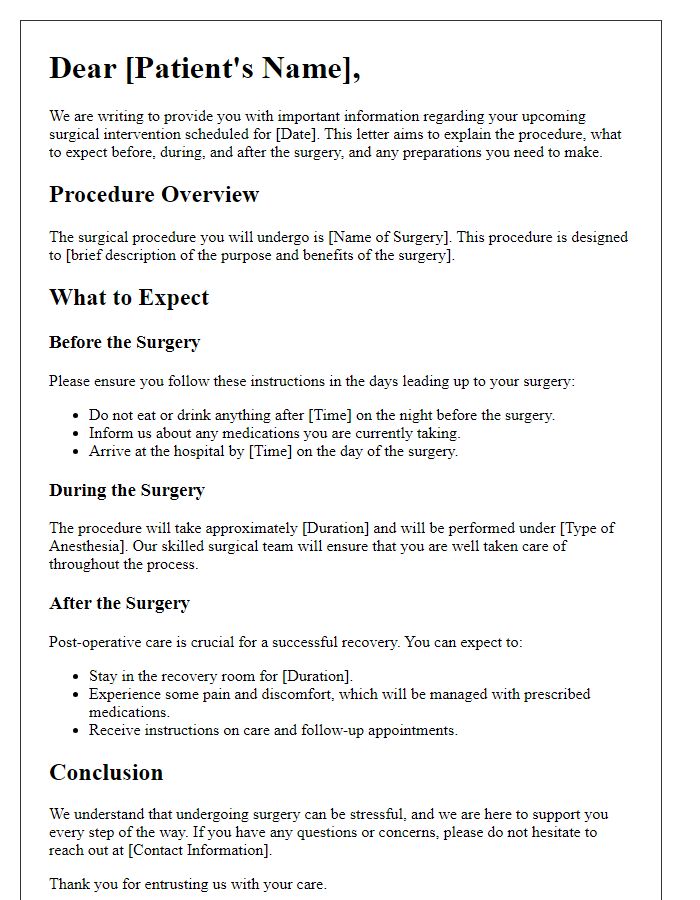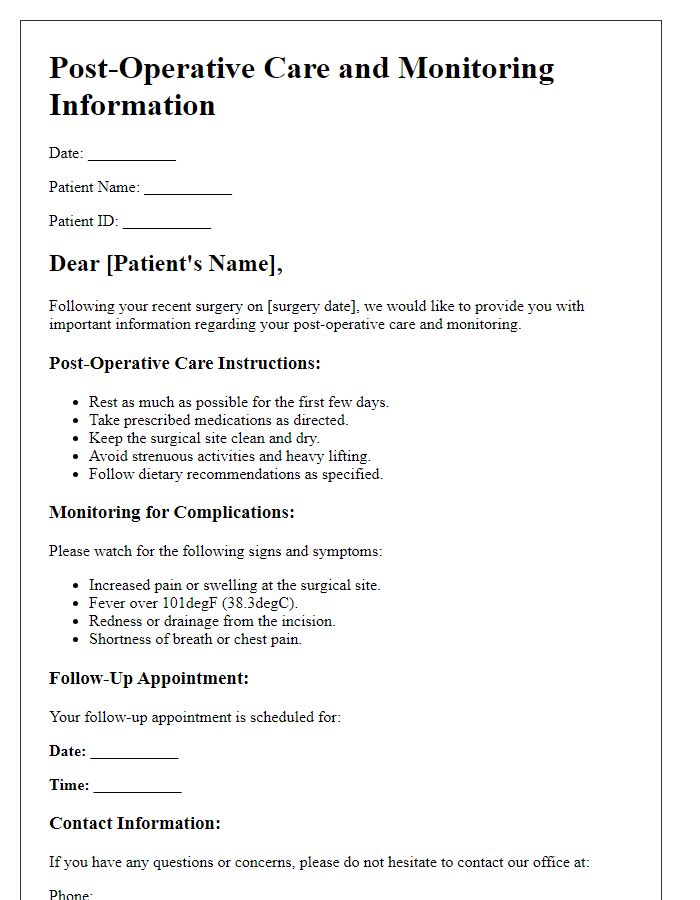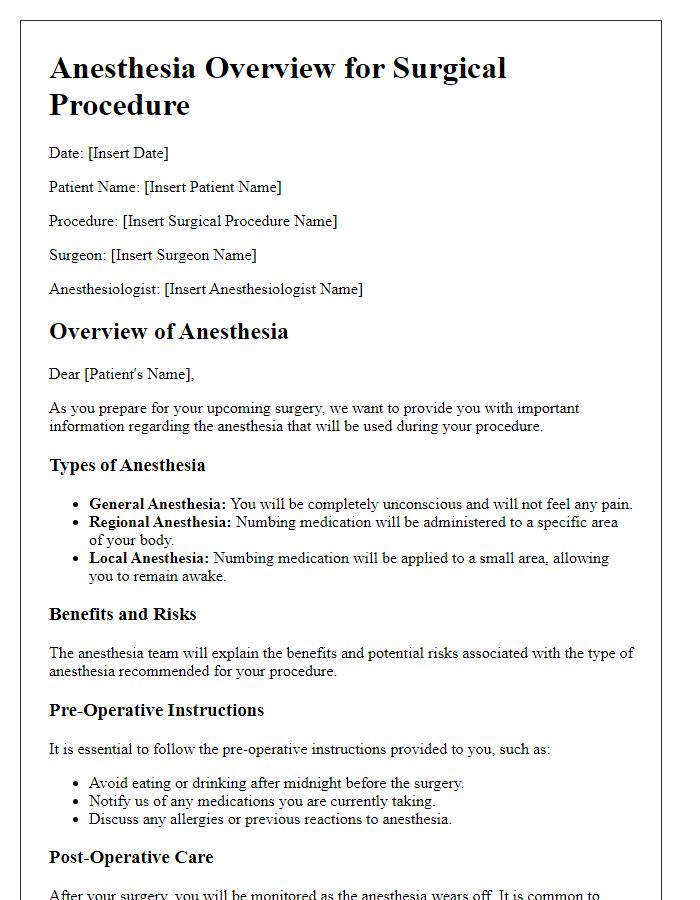Facing surgery can be a daunting experience, but understanding the procedure is the first step toward peace of mind. In this letter, we'll break down what to expect before, during, and after your surgery, ensuring you're well-prepared for each stage. We want you to feel confident and informed, so we'll cover everything from the initial consultation to post-operative care. So, let's dive in and explore the details togetherâkeep reading to discover more!

Procedure Overview
A surgical procedure, such as laparoscopic cholecystectomy, involves the minimally invasive removal of the gallbladder. This surgery is commonly performed in hospitals, typically utilizing general anesthesia to ensure patient comfort. Surgeons utilize small incisions (approximately 0.5 to 1 cm) in the abdomen, inserting a camera (laparoscope) to guide instruments. The procedure generally lasts around 1 to 2 hours. Patients often recover in a hospital, with discharge occurring the same day or after an overnight stay. Post-operative care includes pain management, observation for complications like infections, and a gradual return to normal activities, typically within a few weeks. Pre-surgery, fasting for 8 hours is needed, with essential tests, such as blood work and imaging, performed to assess patient readiness.
Purpose and Benefits
Surgery plays a crucial role in addressing various medical conditions, ranging from organ dysfunction to injury repair. The primary purpose of surgery, such as appendectomy (removal of the appendix), is to alleviate pain, prevent complications, or correct physical deformities. Benefits include improved quality of life, reduction in symptoms, and restoration of functionality, as seen in procedures like knee arthroscopy for joint issues. Additionally, surgical interventions can lead to life-saving outcomes in emergency situations, such as trauma surgery after accidents. The utilization of minimally invasive techniques, like laparoscopic surgery, has transformed many procedures, offering shorter recovery times and reduced risk of infection. Understanding the purpose and benefits of surgery empowers patients to make informed decisions regarding their health care.
Risks and Complications
Surgery carries inherent risks and potential complications that patients must consider. Common risks include infections, which can occur at the surgical site, with incidence rates varying based on the type of procedure, and blood clots, particularly in major surgeries where patients remain immobile for extended periods. Anesthesia reactions also pose a risk, especially for individuals with allergies or pre-existing conditions, affecting approximately 1 in 10,000 cases. Post-operative complications may involve excessive bleeding, necessitating blood transfusions in some instances, and adverse reactions to medications used during recovery. Wound healing issues may arise, particularly in patients with diabetes, as impaired circulation can delay recovery. In more severe cases, organ damage or surgical errors, although rare, can result in significant health challenges, highlighting the importance of thorough pre-operative assessments and discussions with medical professionals.
Pre-Operative Instructions
Pre-operative instructions play a vital role in ensuring a successful surgical experience. Essential guidelines typically include fasting requirements, often necessitating no food or drink for at least eight hours prior to anesthesia administration. Patients should also avoid certain medications, particularly blood thinners like aspirin or warfarin, which can increase bleeding risks during the procedure. Personal hygiene is crucial; patients are often advised to shower using antiseptic soap to minimize infection risks. Furthermore, arrangements for transportation should be made since post-operative sedation can impair mobility. Lastly, it is imperative to disclose any allergies, especially to latex or anesthesia, to the surgical team to prevent adverse reactions.
Post-Operative Care and Recovery
Post-operative care is a crucial phase following surgery, directing the patient's recovery process. Commonly, the duration of recovery varies depending on the specific type of procedure performed, such as laparoscopic surgery, which typically requires around two weeks of healing time. Monitoring vital signs, including heart rate and temperature, is essential within the first 48 hours to detect any potential complications. Patients may need assistance with pain management, often utilizing analgesics like acetaminophen or ibuprofen, while surgical sites require proper cleaning to prevent infection. Dietary adjustments may be necessary, with gradual reintroduction of solid foods starting with clear liquids post-anesthesia. Follow-up appointments, typically scheduled within one to two weeks at healthcare facilities, ensure that healing progresses normally and allow for the timely removal of sutures or staples. Regular physical activity, prescribed by a healthcare professional, is integral for regaining strength and mobility, reducing the risk of blood clots.













Comments